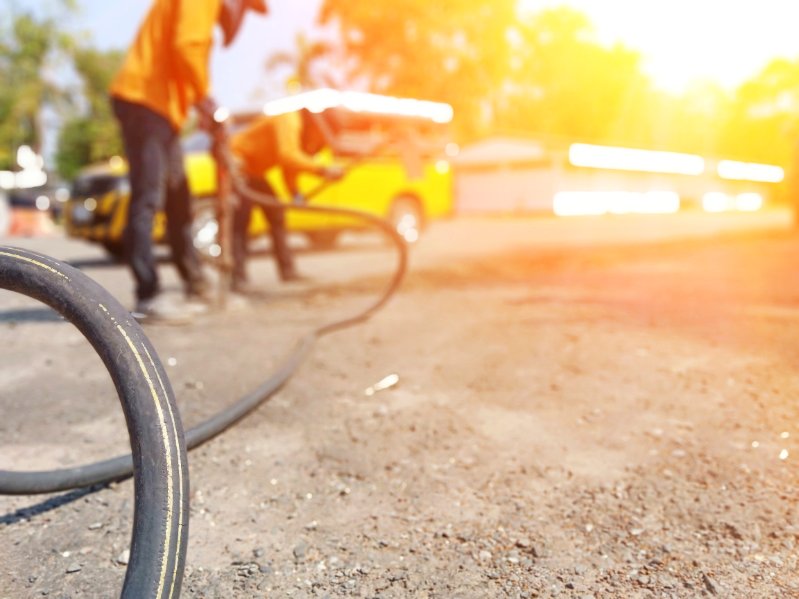
We don’t even have to say it, but we will: it is HOT out there. In these stifling temperatures, it’s important to be cautious when working outside on any project, but especially when working with hot materials like asphalt. Asphalt workers are at higher risk for heat-related injuries between the months of June and August. The American Journal of Industrial Medicine reports that about 75% of heat-related deaths occur in the three hottest summer months in direct correlation with high temperatures.
It’s crucial as for workers to pay attention to what is going on with their body and to pay attention to their coworkers. Signs of heat stress include impaired thinking or dizziness, unusually sweaty hands, muscle fatigue, cramping, and cloudy vision. Heat cramps are usually the first sign of stress to really address right away, and it’s more than just a small, brief cramp. You can feel pain or spasms in the abdomen, arms, or legs. Sit in shade, cool down, hydrate, and give yourself a few hours before heading back to strenuous work. Heat exhaustion is a bit more extreme, and you’ll know you’ve hit that if your heart is beating rapidly, your body temperature has risen slightly, you feel extremely weak or fatigued, you’re dizzy and irritable, or you feel nauseous and short of breath. Immediately get to a cool area, loosen your clothing, and drink water. If conditions don’t improve withing about 15 minutes, you’ll need to call 911.
Heat stroke is a medical emergency that requires immediate attention. Signs of heat stroke include high body temperature, loss of coordination and confusion, dry skin or profuse sweating, a throbbing headache, or even seizures or coma. Call 911 immediately, get the person to a cool, shaded area and try to get them as cool as possible with cold water or ice until emergency services arrive, unless the worker is shivering.
You may drive by a group of workers in 100-degree weather and wonder why they’re all in long overalls with long sleeves, but there is a reason for wearing proper protective clothing on an asphalt or concrete job. The CDC states: “NIOSH has traditionally encouraged construction workers to wear clothing made of breathable fabrics like cotton and avoid wearing non-breathable synthetic fabrics.” Being covered in a quality, breathable material while working under the sun can actually keep you cooler while also protecting your skin from harmful UV rays.
During the summer months, managers should create space for workers to stagger breaks often so that work can get done in a timely manner while also taking care of employees. It may be a good idea to designate an individual on every shift to monitor the health of employees as the day progresses for any signs of trouble. New workers may need to work up to being in the heat as compared to experienced workers who are more used to the conditions. And encouraging hydration is a must.
At Go Pave Utah, our employees are our top priority, and you can be assured that anyone showing up to work on your project is trained in safety as well as doing the best job possible.